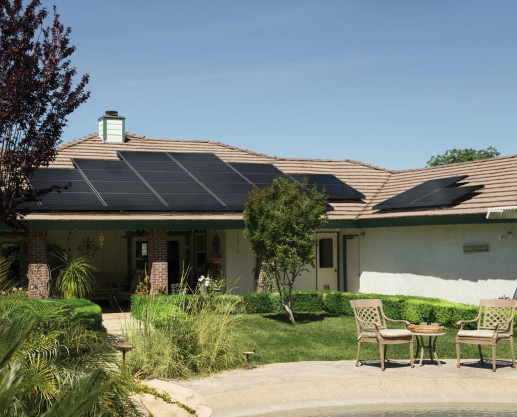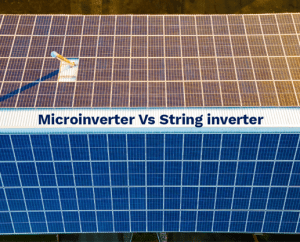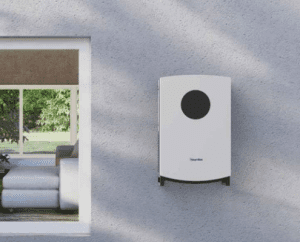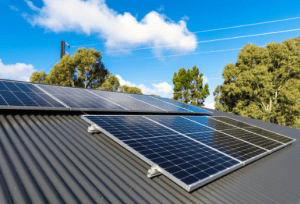Adding solar panels to an existing system
If you have solar panels installed on your home, you may have thought about increasing your capacity. Energy prices are at their highest level in decades in many parts of the world, so renewable sources like solar are becoming more appealing. Additionally, concerns about carbon emissions are growing, and advancements in photovoltaic (PV) panels have increased the efficiency of solar arrays dramatically, even in just the last few years, making the return on investment that much more attractive.
One way to increase the capacity of your solar set-up is to completely replace the panels with newer, more efficient panels. However, this is a very expensive (and usually unnecessary) option. Another option is to simply add more panels to your existing array.
In this post, we look at adding solar panels to an existing system, the benefits, and what to consider when making the decision to expand your array.
Can you add solar panels to an existing system?
Yes, you can add solar panels to an existing system, as long as you have the space for them. So if you want to increase the capacity of your PV array, it’s probably worth looking into adding some new panels.
Why should you expand your solar energy system?
Adding solar panels to your system can offer a lot of benefits. Essentially, adding panels will enhance the benefits you already enjoy with your existing system. The key reasons to expand an existing solar system are:
- To increase the amount of energy generated
- To avoid having to purchase energy from the grid and increase energy independence
- To further reduce your carbon footprint
If these sound good to you, then you may want to look into expanding your PV array.
Key factors to consider when adding additional solar panels to your system
Before you make the decision to add solar panels to your system and commit to paying for them, there are a few things to consider.
Do you have enough space?
Space is the main limiting factor for new solar panels. Many solar systems will already use all of the viable roof space on a home, so adding more panels can be difficult. In some cases it may be possible to have panels installed somewhere other than your roof, such as on frames on the ground. However, most homes don’t have the space for this and the roof is generally the best option for sunlight exposure. Another option is to. This doesn’t require much space and is a popular choice in much of Europe.
Before you think seriously about expanding your solar array, be sure to check with the installer about the amount of space you realistically have for new panels. If you have a balcony, if you’ve recently had an extension, or have built a new shed or garage, this space may also be suitable.
How will you use the extra energy?
If you’re expanding your solar set-up, you may end up generating more electricity than you can use. One of the biggest limitations of solar is the fact that energy is only captured during the day, so any energy produced but not used during sunlight hours is going to be wasted unless you can either sell it back to the grid or invest in equipment for energy storage. It also means you’ll need to buy electricity from the grid at night, adding to your energy bill.
The way around this is to invest in a battery. The type of battery you need will depend on budget, capacity requirements, and space, but it can offer a good return on investment in many cases.
What are your energy requirements?
Your existing solar system will already be meeting a portion of your energy needs, so you should determine how much more energy you’re likely to need from more panels before deciding how many additional panels to install.
You’ll likely want to cover as much of your energy consumption as possible. However, it’s also worth bearing in mind that you don’t want to invest in more panels than you need. This may seem obvious, but estimating how many panels you need is often more complicated than simply using the same calculations you used for your existing system. For example, new panels may be more efficient, meaning you’ll need fewer to get the same result.
What will it cost?
Occasionally, you may be installing more panels purely to reduce your energy dependence or your carbon footprint, in which case the cost of installation may not be particularly relevant. For most people however, price relative to return is going to be the most important thing to consider before diving in, and this can vary depending on the amount of panels you need, the installer, and the type of panels you use.
As with any investment, you should shop around for quotes whenever you’re looking for new panels. Additionally, try to estimate the time it will take for your investment to pay for itself. This will help you make a more informed decision about what panels to buy.
Are the new panels compatible with your system?
New panels may technically be more efficient than the ones in your existing system, but it’s important to determine whether they’re compatible. It may be perfectly possible to add different panels to your system, but it may require additional equipment, , to make them compatible, as well as for safety reasons.
For example, when using a string inverter system, you may also need to add a rapid shutdown device to comply with regulations and to ensure your system is as safe as possible.
When it comes to adding inverters, microinverters are an excellent option for two main reasons. Firstly, microinverters are very flexible as they can be added to any solar system, even if your current system uses string inverters rather than microinverters. Secondly, there are a variety of different types of inverters – from 1-in-1s, which only connect to one panel, to 4-in-1s, which convert energy from four solar panels at once. That means you can easily choose the type of inverter (or combination of types of inverters) that’s right for your system.
Do you need planning permission?
Depending on where you live, you may need planning permission and permits to add new panels to your solar system. You may also need to inform your utility company about the additional capacity. To find out the relevant requirements, talk to a registered local installer.
Benefits of adding to your current solar system
There are several good reasons to expand your solar system, including:
- You can save more money on energy: Solar panels can cut your energy bills significantly, so adding more solar panels will generally save you even more money.
- You can meet increased energy demands: If you’ve found your home’s energy consumption rising, for example if you’ve had children or more people now live in the home, then adding solar panels can help you meet the increased energy demands.
- You can spread out installation costs: While it usually pays for itself eventually, solar can require a significant initial outlay. So adding to your array in sections over time can make it more affordable.
- You’ve extended/added to your home: If you’ve completed a home extension or added a new building (such as a garage), you may have more roof space to play with, making additional solar panels a viable option.




